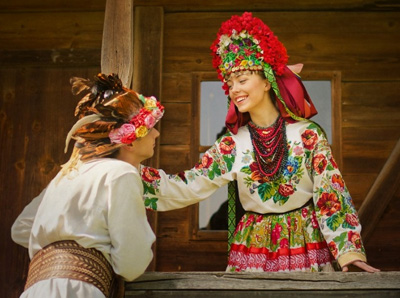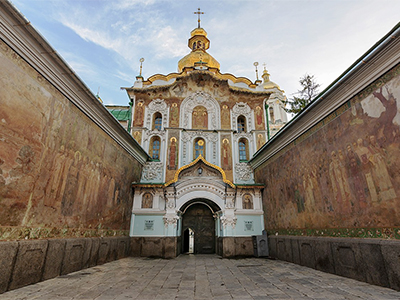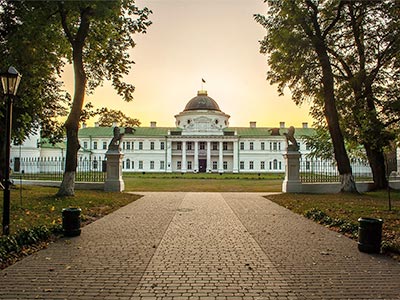 19.12.2022
The Boiky Land
19.12.2022
The Boiky LandThe Boiky land is found attractive due to its evergreen forests, gentlesloped mountains, fastflowing mountain streams and rivers.
Trade routes have passed through this land leading to Western Europe for a thousand years.
Boikys are mountain and pre-mountain dwellers. According to the ethnographic peculiarities and local dialect, the Boiky land has the following boundaries: the River Limnytsia in the east; the Carpathian foothills along such settlements as Nebyliv, Letsivka, Pohorilets, Lopyanka, Mala Turya, Knyazholuka, Bolekhiv, Rozhirne, Stynava, Orhiv, Tustanovychi, Opaka, Nedilnytsia, Stara Sil and Lopushnia in the north; the Polonyna mountain range between the upper reaches of the rivers Uzh and Teresva in the west.
According to the territorial-administrative division, the north-western part of Rozhniativ district and the majority of villages in Dolyna distrist in Ivano-Frankivsk region; Skoliv and Turka districts, the southern zone of Stryi, Drohobych and Sambir districts in Lviv region; the northern part of Mizhhirya and Velykyi Bereziv districts and the whole Volovets district in Transcarpathia region belong to the Boiky land. Best Carpathian mountains tours.
The word Boiky
The origin of the word “Boiky” is still a mystery, though a number of hypotheses have been put forward. Among them, there is a hypothesis concerning a Polish word “bojak” which means “a bull” and which is similar to a Romanian word “boi” meaning “a bull” as well. Others suggest that this name was derived from the name of the Celtic tribes “boyiv”, or due to the frequent usage of this word by local inhabitants, or from the anthroponimic word “Boiko” created from the pre-Slavonic form of the name “Boi”, etc.
The Boiky local accent belongs to the Carpathian dialects of the south-western group of Ukrainian dialects. It still preserves quite a lot of words peculiar only to this region, and even deeply rooted archaisms are among them.
The main occupations of Boiky are agriculture and cattle breeding. Gardening and fruit farming, sometimes gathering, bee keeping, hunting and fishing are additional ones. Among various traditional crafts practised in the Boiky land the most popular were saddlery, pottery, clothes making, carpentry, coopery, wicker- and rootwork.
The food Boiky eat
The Boiky traditional costumes, though have something in common with Ukrainian national costumes, have preserved their local peculiarities. They! were mostly made from homespun hemp or flax linen, cloth and leather. The distinctive features of clothes were white homespun shirts and blouses, skirts, trousers decorated with embroideries or prints, grey or dark brown sleeveless jackets embellished with cord loops, dark brown “siriaks” (homespun peasants’ coats), richly ornamented straight cut “kozhukhs” (sheepskin coats).
Boikys have mostly lived on vegetable, mushroom and fish foods, dairy products plus meat for feasts. The most popular dishes were those made of flour, such as oatmeal “kysil” (a kind of starchy jelly), “chyr” (made of corn or oats flour), “varenyky”(dumplings), “halushky” (small boiled dumplings), pasta; oats and barley porridge, and legumes. Potatoes, cabbages and cucumbers were the main vegetables in their diet.
Boiky villages are usually situated in a row in valleys along the rivers or streams. Main roads, which connected all the village farmsteads with other settlements, ran parallel to those water arteries. Apart from traditional two or three chamber dwellings, there were often built the so-called ‘long house’ complexes standing in a row, with gabled straw or shingle roofs. Such housing complexes contained not only farmhouses, but also different sheds, barns and other household buildings. On a relatively small territory inhabited by Boikys quite a lot of great national monuments have been preserved, namely timber chapels, belfries and churches.
-
 27.02.2024
World of pysanka
Embark on a journey into the captivating world of Pysanka, the Ukrainian...
27.02.2024
World of pysanka
Embark on a journey into the captivating world of Pysanka, the Ukrainian...
-
 29.01.2024
Exploring the Treasures of Kyiv’s Lavra Monastery
In the heart of Kyiv lies the venerable Lavra Monastery, a testament...
29.01.2024
Exploring the Treasures of Kyiv’s Lavra Monastery
In the heart of Kyiv lies the venerable Lavra Monastery, a testament...
-
 13.01.2024
Kachanivka, Eden on Earth
Rich in history, it hosted renowned artists, notably poet Taras Shevchenko.
13.01.2024
Kachanivka, Eden on Earth
Rich in history, it hosted renowned artists, notably poet Taras Shevchenko.

